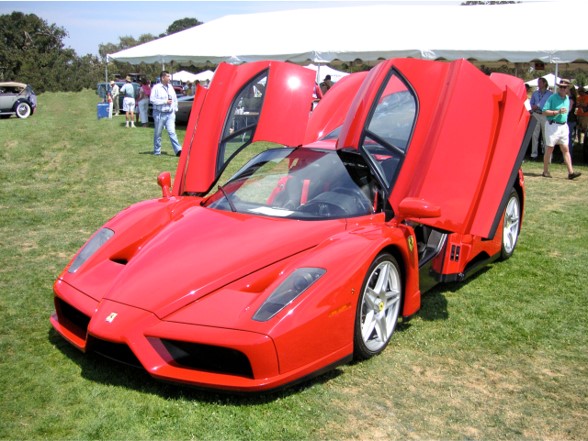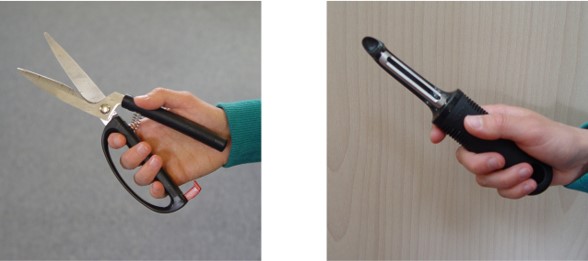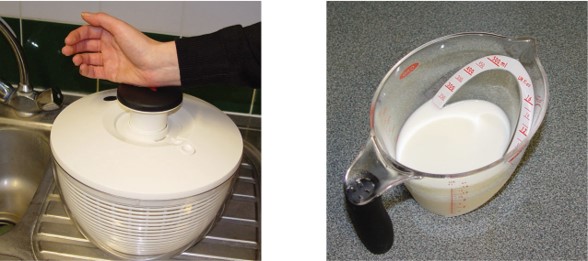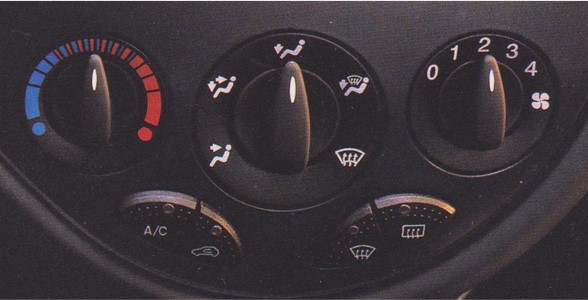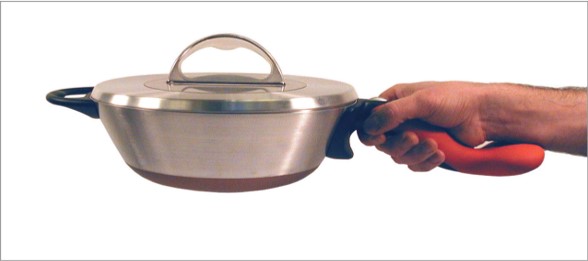Case studies can demonstrate how inclusive design can foster innovation and improve design. In particular, the following case studies were chosen to show how inclusive design can be put into practice effectively in a commercial context, combining inclusivity with style, and producing products that are both comfortable and effective.
On this page:
Ferrari Enzo
With only 400 produced and a price of $670,000, the Ferrari Enzo is probably the last place you would expect to find inclusive design. Surprisingly though, a 2004 press article from the Ferrari Owners’ Club indicates inclusive thinking within Ferrari’s design strategy for access and egress. The text below is paraphrased from the press article.
Climb into the latest Ferrari sports car and you are unlikely to notice the modifications designed with overweight, arthritic pensioners in mind. The Italian carmaker is just one of many companies grappling with a demographic shift that challenges the fundamental rules of marketing and design. The average buyer of a Ferrari road car is nearing 50 and set to get older. Car designers are responding by sparing the knees with changes to the door height. The trick is that no one must be able to tell. ‘The profile of our customers means we have to pay attention to practicality and functionality without compromising the sportiness,’ said Giuseppe Bonollo, strategic marketing director. ‘There are some engineering choices you can make which give you better accessibility and internal roominess. The way the doors open on the Ferrari Enzo, for example, allows part of the roof and part of the door undermoulding to come away as well, making it easier to enter the car.’
The press article credited the improved comfort of a modern Ferrari with doubling the average distance driven by its owner from 2,500 miles a year in 1990 to 5,000 miles in 2004.
OXO Good Grips
OXO began with a few simple questions - Why do ordinary kitchen tools hurt your hands? Why can’t there be wonderfully comfortable tools that are easy to use?
In 1990, the first group of 15 OXO Good Grips kitchen tools was introduced to the US market. These ergonomically- designed, transgenerational tools set a new standard for the industry and raised the bar of consumer expectation for comfort and performance.
The annual growth in sales was over 35% per year from 1991 to 2002, and the line now contains more than 500 innovative products covering many areas of the home. The OXO Good Grips line has been recognized by several national and international organizations for superior design. The company’s strategy is based on the primary goals of making products that are usable and desirable.
See www.oxo.com for more information.
BT Freestyle
The BT Freestyle 7xx series was BT’s first opportunity to test its new embedded inclusive design process. BT commissioned Alloy to carry out initial research and develop concepts which, along with consumer consultation, came up with the criteria for the phone in 7 ‘easy’ categories:
- Easy to dial - Large comfortable keys
- Easy to read - High contrast and large characters
- Easy to hear - Comfortable ear bowl, easy volume adjustment and inductive coupler for digital hearing aids
- Easy to hear phone ringing - Lower frequency ringer and increased size of the call indicator light
- Easy to understand - No icons, no abbreviations, keys with single functionality, intelligent function hierarchy
- Easy to answer and end calls - Large, separate keys to start and end calls
- Easy to see who is calling - 2 line dot matrix display, large characters
Since its launch in July 2008 sales have increased by 20%. The inclusive design has also minimised product returns thereby improving profitability, despite higher manufacturing costs. Packed with features without compromising on style, the result is BT’s flagship accessible phone which has proven very popular amongst consumers.
Ford Focus
The 1999 Ford Focus was developed to include as many customers as possible, on a worldwide basis. Focusing in on one specific detail, the heater controls for this car are shown opposite.
The centre knob for the distribution control is larger than the knobs either side of it, which helps driver distinguish between the controls without taking their eyes off the road. Furthermore, the larger diameter provides sufficient space for larger heater control graphics and reduces the effort of turning the knob.
Factory Wares saucepan
Factorydesign won the 2003 DBA Inclusive Design Challenge with their concept ‘Factory Wares: an inclusive saucepan’, which is shown opposite. The brief for this challenge was to:
“
Design a mainstream product, service, environment, print, on-line or other communication which deliberately includes the needs and aspirations of currently excluded groups of people. ”
The ability to live independently is the key to quality of life for many disabled people. The users with severe arthritis who advised Factory Design all loved cooking but their moment of truth came once the dish was ready and had to be lifted from the heat. It was then that the weight and design of the saucepan increased the pain of their condition and led to accidents.
According to the leading arthritis charity Versus Arthritis, around ten million people of all ages in the UK are affected by chronic linb pain, and every one of them needs to eat. Visually-impaired cooks have a different set of issues, which relate more to safety and hygiene. Factory Design’s challenge was to create a saucepan that would transform the pain of their cooking experience to one where pleasure is uppermost and where safety and hygiene are assured.
Feedback
We would welcome your feedback on this page:
Privacy policy. If your feedback comments warrant follow-up communication, we will send you an email using the details you have provided. Feedback comments are anonymized and then stored on our file server. If you select the option to receive or contribute to the news bulletin, we will store your name and email address on our file server for the purposes of managing your subscription. You can unsubscribe and have your details deleted at any time, by using our Unsubscribe form. If you select the option to receive an activation code, we will store your name and email address on our fileserver indefinitely. This information will only be used to contact you for the specific purpose that you have indicated; it will not be shared. We use this personal information with your consent, which you can withdraw at any time.
Read more about how we use your personal data. Any e-mails that are sent or received are stored on our mail server for up to 24 months.


